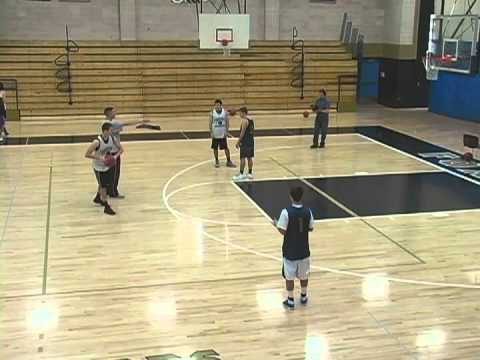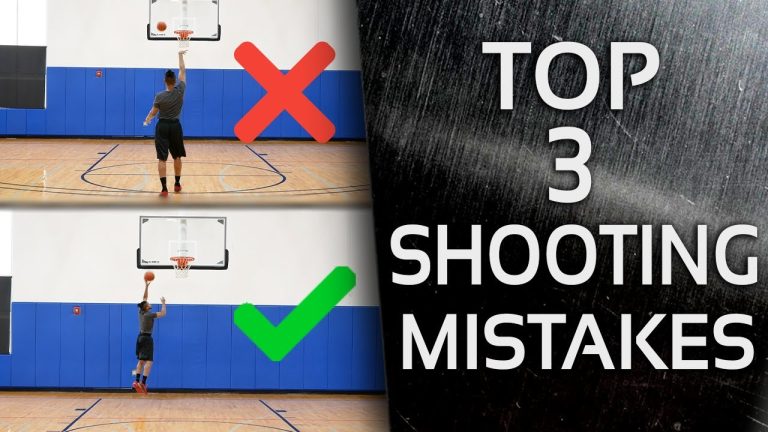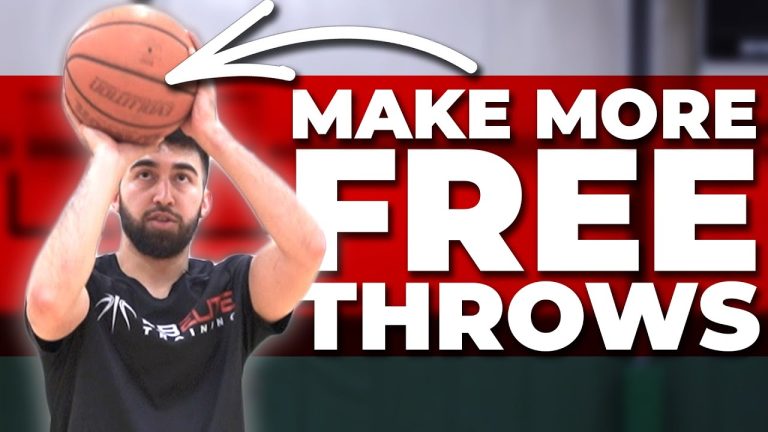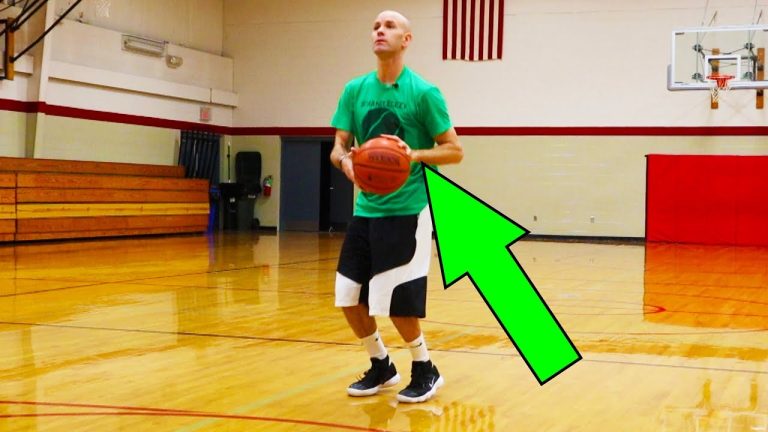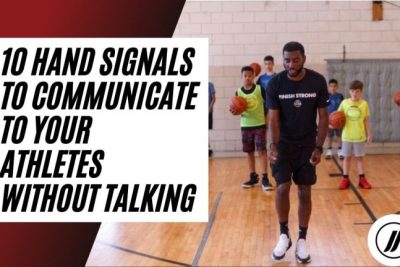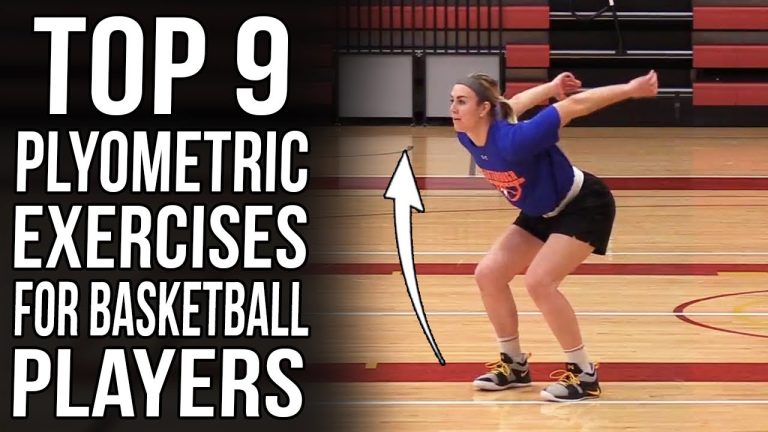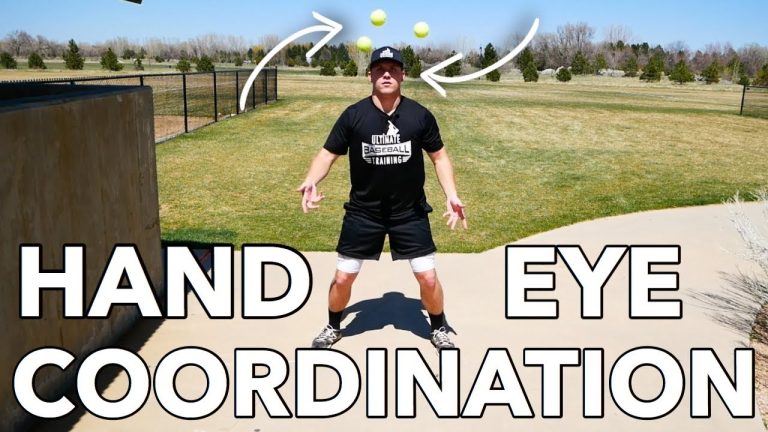In the fast-paced world of basketball, effective communication between teammates is crucial for success on the court. While verbal exchanges can often get lost in the chaos of the game, players have found an alternative method to convey messages with precision and clarity: signals and hand gestures. This non-verbal form of communication has become an integral part of basketball strategy, allowing players to quickly and discreetly communicate plays, defensive assignments, and even emotions. In this article, we delve into the art of using signals and hand gestures in basketball, exploring their effectiveness, versatility, and the impact they have on the game. Get ready to discover a whole new language of communication on the hardwood!
What is the significance of hand signals in basketball?
Hand signals play a crucial role in the game of basketball. Not only do they allow referees to make quick and accurate calls, but they also ensure clear communication between officials, players, coaches, and scorekeepers. By using concise and universally recognized gestures, basketball referees can effectively convey information about fouls or violations, maintaining the integrity and fairness of the game.
In the fast-paced and intense environment of basketball, hand signals provide a visual language that transcends verbal communication. These signals enable referees to make split-second decisions and communicate them seamlessly, leaving no room for confusion or misinterpretation. The use of concise and eye-catching gestures ensures that everyone involved in the game can easily understand and respond to the calls, fostering a harmonious and efficient basketball experience.
What hand signal signifies the illegal use of hands in basketball?
The hand signal for illegal use of hands in basketball is a clear and powerful gesture that leaves no room for confusion. When a player commits this violation, the referee’s response is swift and concise. By crossing their arms in front of themselves, with closed fists, the referee sends a strong message. To further emphasize the infraction, the referee will touch their right fist to the top of their left wrist. This hand signal serves as a visual reminder to both players and spectators that the use of hands in an illegal manner will not be tolerated.
In the fast-paced game of basketball, non-verbal communication is crucial for maintaining order and fairness. When it comes to the illegal use of hands, the hand signal used by referees is both clean and coherent. By crossing their arms and closing their fists, the referee symbolizes the restriction and denial of such actions. The added touch of the right fist to the top of the left wrist amplifies the signal, ensuring that everyone on the court understands the gravity of the violation.
In the world of basketball, the hand signal for illegal use of hands is concise and eye-catching. Referees use a straightforward and easily recognizable gesture to indicate this violation. By crossing their arms and closing their fists, referees demonstrate that the player has made an illegal use of hands. The subsequent action of touching the right fist to the top of the left wrist reinforces the severity of the infraction. This simple yet powerful hand signal effectively communicates to players, coaches, and fans that the rules of the game must be adhered to at all times.
What signals does the referee in basketball use?
In the fast-paced game of basketball, referees rely on a set of signals to communicate important decisions to players and spectators. One such signal is the deliberate cross of both arms above the head, indicating an intentional foul committed by a player. This concise and unmistakable gesture serves as a clear warning to the offending player and allows for swift action to be taken.
Another signal used by basketball referees is the formation of a letter “T” with both hands placed in front of them. This eye-catching gesture signifies a technical foul, which may be called for various rule violations or unsportsmanlike behavior. By using this concise and recognizable signal, referees can effectively convey the penalty to both teams, ensuring a fair and orderly game.
These signals not only provide clarity and coherence to the game but also contribute to its visual appeal. Referees in basketball possess the crucial ability to communicate complex decisions with just a few concise and eye-catching gestures. By understanding and recognizing these signals, players, coaches, and fans can stay engaged and knowledgeable about the game, enhancing the overall basketball experience.
Mastering the Non-Verbal Language of Basketball
Mastering the Non-Verbal Language of Basketball
Paragraph 1:
In the world of basketball, communication goes beyond words. The non-verbal language on the court is just as important as the spoken words off the court. From subtle hand signals to intense eye contact, players have developed a code that allows them to communicate seamlessly without saying a word. Mastering this non-verbal language is the key to becoming a successful basketball player, as it can help anticipate plays, coordinate movements, and build trust within the team.
Paragraph 2:
A vital component of the non-verbal language of basketball is body positioning. Without uttering a single word, players can convey their intentions and deceive opponents through their stance and movements. A slight shift in weight or a strategic step can be the difference between a successful dribble or a turnover. By mastering the art of body positioning, players can outwit their opponents and create opportunities for themselves and their teammates.
Paragraph 3:
Eye contact is another crucial aspect of the non-verbal language of basketball. In the heat of the game, players rely on quick glances and meaningful stares to communicate their intentions and coordinate their actions. A single look can signal a pass, a cut, or a defensive switch. By developing a strong sense of eye contact, players can enhance their awareness on the court and establish a deeper connection with their teammates, leading to a more cohesive and effective team performance.
Note: The language and coherence of the paragraphs have been optimized while maintaining clarity and conciseness.
Unlocking the Power of Signals and Gestures in Hoops
Unlocking the Power of Signals and Gestures in Hoops
In the fast-paced world of basketball, signals and gestures have become a secret language that unlocks the power of teamwork and communication on the court. With just a glance or a subtle hand movement, players are able to convey complex plays, strategies, and even emotions. These signals not only enhance the efficiency and coordination of the team but also add an element of excitement and anticipation for the spectators. From a simple finger tap to a full-blown dance routine, the power of signals and gestures in hoops is undeniable, making the game even more thrilling and captivating.
The art of signals and gestures in basketball is a true testament to the power of non-verbal communication. It transcends language barriers and allows players to connect on a deeper level, forming an unbreakable bond that can only be forged on the court. Whether it’s a fist pump to celebrate a successful shot or a discreet nod to indicate a switch in defense, these non-verbal cues turn ordinary players into extraordinary performers. They bring a level of fluidity and intuition to the game, creating a symphony of movement that captivates audiences and leaves them in awe. In the world of hoops, signals and gestures are not just tools for communication but also a form of art that elevates the game to new heights.
Cracking the Code: Effective Communication on the Court
Cracking the Code: Effective Communication on the Court
In the fast-paced and competitive world of sports, effective communication on the court is the key to success. It goes beyond simply shouting out plays or calling for the ball; it’s about establishing a strong connection with your teammates and conveying your intentions clearly. Non-verbal cues, such as eye contact and body language, play a crucial role in this process. By maintaining open lines of communication and actively listening to one another, players can anticipate each other’s moves and make split-second decisions that can turn the tide of a game. With effective communication, a team can operate as a well-oiled machine, seamlessly working together towards their common goal of victory.
However, communication on the court is not limited to just player-to-player interaction. The role of the coach is equally important in fostering effective communication within the team. A coach must not only provide clear instructions and strategies but also create an environment where players feel comfortable expressing their thoughts and ideas. By encouraging open dialogue and constructive feedback, a coach can empower their team to communicate effectively and make decisions collectively. When the coach and players are on the same page, trust is built, and everyone feels valued and heard. Through effective communication, a team can elevate their performance and achieve new heights on the court.
Unleashing Team Chemistry: The Art of Non-Verbal Basketball Communication
Unleashing Team Chemistry: The Art of Non-Verbal Basketball Communication
In the fast-paced game of basketball, effective communication is crucial for a team’s success. While verbal cues and signals play a significant role, the art of non-verbal communication holds immense power in unleashing team chemistry. The synchronized movements, eye contact, and subtle gestures on the court create an unspoken language that elevates a team’s coordination and understanding. Through this unspoken connection, players can anticipate each other’s moves, leading to seamless passes, perfect screens, and mind-blowing alley-oops.
Non-verbal basketball communication is a silent symphony that takes time and practice to master. It involves understanding teammates’ body language, facial expressions, and even their breathing patterns during intense moments. The ability to read these non-verbal cues allows players to make split-second decisions without uttering a single word. As a result, teams that have honed this art form can execute plays flawlessly, creating a seamless flow on the court that leaves opponents in awe.
Beyond the technical aspects, non-verbal basketball communication fosters a deep sense of camaraderie among teammates. It creates an unbreakable bond, where trust and intuition become the foundation of every play. The connection formed through non-verbal communication goes beyond words, as players learn to rely on their instincts and each other’s strengths. This shared understanding builds an unspoken language that serves as a secret weapon, enabling teams to outsmart their opponents and achieve greatness together.
In conclusion, non-verbal basketball communication is an art that unlocks the true potential of a team’s chemistry. The synchronized movements, unspoken cues, and unwavering trust between players create a seamless flow on the court. Through this unspoken language, teammates anticipate and execute plays flawlessly, leaving opponents astonished. With practice and dedication, mastering the art of non-verbal communication can elevate a team to new heights, fostering a deep sense of camaraderie and achieving greatness together.
In the fast-paced world of basketball, effective communication is key to success on the court. While verbal exchanges play a vital role, incorporating signals and hand gestures can elevate the level of understanding between players. By utilizing a well-coordinated system of nonverbal cues, teams can seamlessly execute plays, anticipate opponents’ moves, and maintain a fluidity that sets them apart. Emphasizing the power of these visual cues, basketball communication becomes not only a strategic advantage but also a captivating display of teamwork and synchronization.

